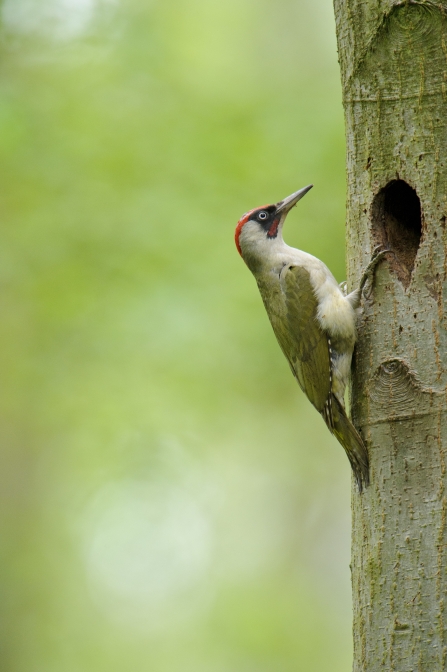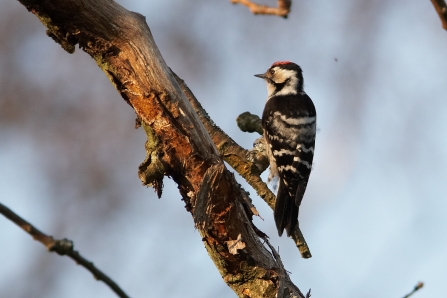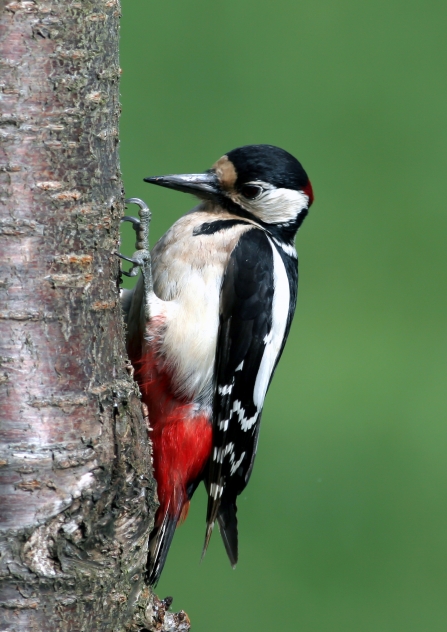In particular the chance to see our colourful and enigmatic woodpeckers is often a spring highlight for many amateur twitchers. We have 3 species of woodpecker in the UK, the lesser spotted, the great spotted and the green woodpecker.
Green Woodpeckers are the largest of our species with olive green feathers and a distinctive cardinal red head cap. Although they nest in tree cavities they are most commonly found on the ground rooting around for larvae in the soil, especially where ant hills are common. Look out for a pigeon sized bird with an undulating flight and a distinctive lime green rear end as it flies into a woodland copse. They can be found in any open green space with woodland around the edges including allotments and parks. Further afield they are often spotted our nature reserves.




